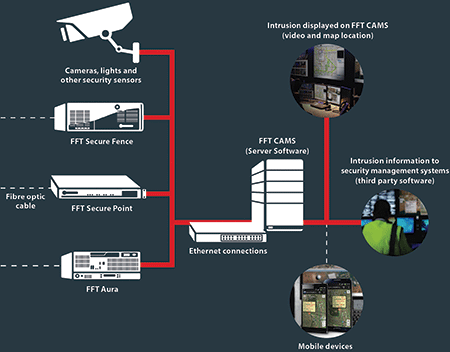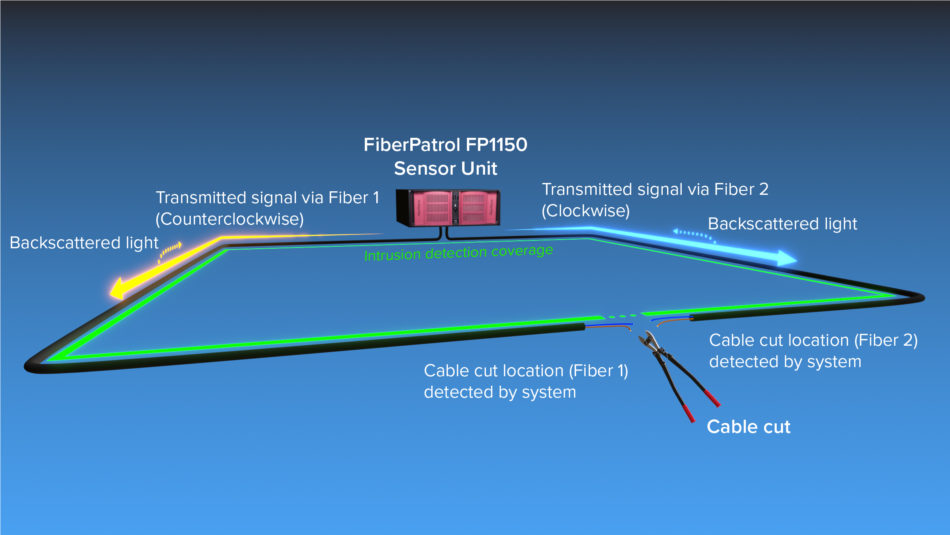Benefits a Fiber Optic Security System for Commercial Security Installations
Benefits a Fiber Optic Security System for Commercial Security Installations
Blog Article
Why Fiber Optic Safety And Security Systems Are the Future of Protection
The shift to fiber optic security systems marks a considerable innovation in the realm of protection, driven by their phenomenal data transmission capacities and resilience to external interferences. These systems not only facilitate faster and more trustworthy interaction but also provide an affordable service with decreased upkeep needs. As the landscape of protection develops along with emerging technologies such as AI and IoT, the potential for fiber optics to boost and redefine security frameworks becomes increasingly apparent. Nevertheless, the ramifications of these improvements elevate important inquiries concerning the future of security actions and their performance in an ever-changing atmosphere.
Benefits of Fiber Optic Solutions
Among the main advantages of fiber optic systems is their remarkable bandwidth ability, which assists in the transmission of large quantities of data over fars away without substantial loss. This particular is especially useful for protection applications that need the continuous monitoring and transfer of high-def video feeds, sensing unit data, and various other vital info. Fiber optics can fit the growing needs of contemporary security systems, making sure that information stays undamaged and trustworthy.
In addition, fiber optic cables are much less at risk to electro-magnetic disturbance, which can be a substantial concern in settings with various digital tools. This resistance improves the stability of the information being sent, consequently lessening the threat of information violations or system failures. Fiber optic systems are naturally extra protected than traditional copper cables, as tapping right into a fiber optic line without discovery is exceptionally hard.
The longevity of fiber optic wires likewise adds to their appeal. They are resistant to ecological variables such as moisture and temperature fluctuations, lowering upkeep expenses and enhancing system durability. Overall, these benefits position fiber optic systems as a robust and reliable option for modern-day security infrastructures, making certain reliable and secure data transmission.
Improved Data Transmission Speed

The capability to transfer large amounts of data rapidly promotes the seamless combination of high-definition video clip feeds and progressed analytics. Safety systems can now process and evaluate information in real-time, improving reaction times and situational awareness. Furthermore, fiber optic connections support longer transmission ranges without degradation of signal quality, making them perfect for extensive security networks.
The increased rate of fiber optic systems not only improves the efficiency of safety operations however likewise reduces latency. This is specifically crucial in critical situations where prompt decision-making can prevent safety violations or alleviate potential risks. As organizations remain to prioritize safety and security and efficiency, the need for quick and trustworthy information transmission will undoubtedly solidify fiber optic systems as a cornerstone of contemporary security facilities.
Resistance to Interference
Fiber optic protection systems constantly show exceptional resistance to electromagnetic disturbance, an essential advantage in settings prone to electronic noise. Unlike conventional copper wires, which can be adversely impacted by magnetic fields, superhigh frequency interference, and various other types of electric disturbance, fiber optic wires use light to transfer data. This intrinsic property ensures that the signals continue to be clear and unaltered, no matter of bordering electronic task.
Making use of glass or plastic fibers in fiber optic modern technology creates an obstacle versus disturbance, permitting for reliable data transmission also in challenging circumstances such as commercial facilities, click here now metropolitan areas with high electronic web traffic, or locations near radio towers. This characteristic significantly reduces the probability of signal deterioration or loss, making fiber optic systems specifically appropriate for security applications where integrity and precision of information are vital.
In addition, this resistance to interference enhances the general performance and dependability of security systems, making sure that tracking and alert systems work seamlessly. In a world where safety is progressively endangered by advanced modern technologies, the durability of fiber optic systems sticks out as my sources a critical function, enhancing their status as a necessary part of modern-day safety and security infrastructure.
Cost-Effectiveness Over Time
Substantial expense financial savings can be accomplished over time with the implementation of fiber optic safety systems. While the first financial investment may appear higher contrasted to traditional copper-based systems, the long-term monetary benefits emerge with minimized operational and upkeep costs (fiber security). Fiber optic cables are naturally extra resilient and much less vulnerable to environmental elements, which converts to lower substitute and repair work costs over their lifespan
Furthermore, fiber optic systems require less power to run, which better decreases power expenses. Boosted information transmission capabilities enable less repeaters and amplifiers, decreasing devices investment and improving setup processes. The scalability of these systems additionally contributes to cost-effectiveness, as organizations can broaden their security framework without sustaining significant extra costs.
One more element to consider is the boosted efficiency in monitoring and action abilities that optical fiber provide. Boosted real-time information transmission can lead to quicker case reaction times, possibly YOURURL.com mitigating losses and liabilities related to safety violations. Altogether, the long-lasting benefits of fiber optic protection systems not only warrant the preliminary expense yet also position them as a financially prudent selection for organizations looking for durable security remedies.

Future Advancements in Security
Advancing technologies are established to reinvent security systems, integrating fabricated intelligence (AI) and artificial intelligence to improve danger discovery and response capabilities. These advancements will certainly permit protection systems to assess substantial amounts of data in real-time, recognizing patterns and abnormalities that suggest prospective hazards. This positive technique will allow faster decision-making and more reliable case feedbacks.
Additionally, the incorporation of the Internet of Points (IoT) is leading the way for interconnected safety and security gadgets, offering thorough monitoring and monitoring. Smart sensing units can communicate info about ecological modifications, while automated alerts can alert protection workers right away of questionable activities.
Furthermore, the evolution of biometric modern technologies will certainly even more boost safety and security systems. Face acknowledgment, fingerprint scanning, and retina recognition are ending up being more advanced, supplying layers of authentication that are hard to bypass.
Final Thought
Finally, fiber optic safety systems stand for a substantial advancement in security modern technology, offering unequaled data transmission rate, resistance to electro-magnetic disturbance, and lasting cost-effectiveness. As the demand for advanced safety solutions remains to grow, the combination of fiber optics with arising modern technologies such as AI, IoT, and biometrics will certainly even more boost security facilities (fiber security). The mix of these advancements will certainly make sure a more protected and receptive atmosphere, solidifying fiber optics as a keystone of future protection systems
Report this page